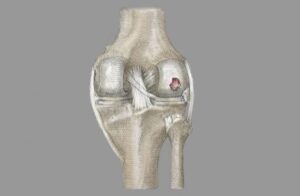In the ever-evolving landscape of healthcare, patient acquisition remains a paramount concern for healthcare providers. While cost-efficiency is crucial, compassionate approaches to patient acquisition have gained momentum in recent years. This article explores strategies and evaluation methods of Cost-Efficient Patient Acquisition for healthcare organizations looking to balance cost-effectiveness with empathy in their patient acquisition efforts.
The Significance of Compassionate Patient Acquisition
Building Trust through Empathy
In the healthcare industry, trust is the cornerstone of successful patient acquisition. Patients are more likely to engage with providers they perceive as empathetic. By approaching patient acquisition with compassion, healthcare organizations can build trust from the very beginning of the patient journey.
Enhancing the Patient Experience
A compassionate approach isn’t limited to the clinical encounter. It starts from the first point of contact. When patients feel valued and understood, their overall experience improves, leading to higher satisfaction rates and increased loyalty.
Strategies for Cost-Efficient Patient Acquisition
Personalized Communication
Tailoring communication to individual patient needs and preferences is a powerful way to show compassion. Utilizing patient data, healthcare providers can send personalized messages and offers, fostering a sense of connection.
Active Listening and Feedback
Listening attentively to patient feedback and addressing their concerns demonstrates a commitment to their well-being. Encouraging patients to share their thoughts and experiences can lead to meaningful improvements in care delivery.
Educational Content
Providing informative content about health conditions and treatments not only empowers patients but also showcases a commitment to their well-being. Educational materials should be easily accessible and tailored to patient demographics.
Community Engagement
Engaging with the local community through health fairs, workshops, and support groups demonstrates a commitment to the well-being of the broader population. This fosters goodwill and trust, making patients more likely to choose your services.
Transparency in Pricing
One significant source of anxiety for patients is the uncertainty of healthcare costs. Transparent pricing models help alleviate this concern, showcasing your commitment to fairness and affordability.
Patient-Centered Care Teams
Assign patient care teams that provide personalized support throughout a patient’s journey. These teams can include nurses, social workers, and patient navigators who ensure patients feel supported and understood.
Timely Communication
Ensure prompt and clear communication with patients. Timely responses to inquiries, appointment reminders, and follow-up calls can make patients feel valued and cared for.
Empathy Training
Invest in empathy training for all staff members, from receptionists to healthcare providers. Teach active listening skills and techniques to convey empathy effectively in every interaction.
Virtual Health Workshops
Host virtual health workshops or webinars on relevant topics to educate patients and provide them with opportunities to interact with healthcare professionals. This fosters a sense of community and learning.
Personalized Health Plans
Work with patients to create personalized health plans that align with their goals and values. Involve them in decision-making processes, promoting a sense of empowerment and partnership in their healthcare.
Emotional Support Resources
Offer emotional support resources, such as access to counselors or support groups, for patients facing serious diagnoses or dealing with chronic conditions. Addressing their emotional needs is a critical aspect of compassionate care.
Also read:
- Medical Billing Audit: An In-Depth Solution for Healthcare Practices
- Leverage the Strength of Patient Reviews to Enhance Your Practice
Evaluating Compassionate Approaches to Cost-Efficient Patient Acquisition
Patient Surveys
Regular patient surveys can gauge how patients perceive your organization’s compassion in patient acquisition. Questions about communication, empathy, and overall satisfaction are valuable metrics.
Net Promoter Score (NPS)
The NPS measures patient loyalty and willingness to recommend your services to others. High NPS scores indicate that your compassionate approach is resonating with patients.
Patient Retention Rates
Patient retention is a key indicator of successful compassionate patient acquisition. Track the number of returning patients to assess the effectiveness of your strategies.
Online Reviews and Ratings
Monitor online reviews and ratings on platforms like Google and Healthgrades. Positive reviews citing compassionate care can boost your reputation and attract new patients.
Employee Feedback
Your staff plays a pivotal role in delivering compassionate care. Regularly seek their input on patient interactions and incorporate their insights into training and improvement efforts.
Challenges and Pitfalls
Balancing Compassion with Efficiency
While compassion is vital, healthcare organizations must strike a balance between empathy and operational efficiency. Overemphasis on either can lead to financial strain or suboptimal patient experiences.
Training and Education
Ensuring that all staff members understand and embody compassionate patient acquisition requires ongoing training and education. This can be resource-intensive but is essential for success.
Analyzing Cultural Competence
In an increasingly diverse healthcare landscape, cultural competence is vital for compassionate care. Discuss methods for evaluating how well healthcare organizations address the unique cultural needs and preferences of their patient populations. Explore the role of cultural competence in patient trust and satisfaction.
Conclusion
In today’s healthcare landscape, a compassionate approach to patient acquisition is not only ethically sound but also strategically advantageous. By building trust, enhancing patient experiences, and using targeted strategies, healthcare providers can achieve cost-efficient patient acquisition while fostering empathy and compassion. Continuous evaluation and adaptation are key to sustaining this compassionate approach in the long run, ensuring that patients receive the care and consideration they deserve.









